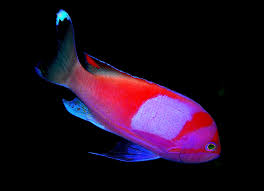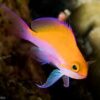The Dragon in Stories of Invention and Creation

The dragon, often seen as a fearsome and mystical creature, has transcended its role as a mere monster in mythologies and folklore. Throughout history, dragons have represented much more than just destructive forces; they have been symbols of wisdom, power, and the potential for transformation and creation. In many cultures, dragons have played crucial roles in stories about invention, creativity, and the act of creation itself. These legendary creatures are often depicted as guardians of knowledge or sources of inspiration for some of the greatest discoveries in human history. This article explores the profound connection between dragons and the themes of invention and creation in various mythologies and stories.
The Role of Dragons in Creation Myths
Dragons are prominent figures in many creation myths around the world, often serving as the catalysts or the very sources of creation. In these stories, dragons are not just symbols of chaos and destruction; they are central to the formation of the world and the emergence of life itself.
In Chinese mythology, one of the most prominent dragons is the Azure Dragon (Qinglong), one of the Four Symbols representing different parts of the cosmos. The dragon in this context symbolizes the forces of creation, particularly the elemental energy of water and its ability to bring life to the world. The creation of life and the cosmos itself is often attributed to the balancing of these elemental forces, where the dragon plays a key role in harmonizing the environment and fostering growth.
In Norse mythology, the dragon Níðhöggr gnaws at the roots of Yggdrasil, the great world tree that connects all realms. While the dragon’s action is seen as destructive, it is also part of the cyclical process of creation and recreation in the universe. This destruction is essential for renewal, and Níðhöggr represents the darker side of creation, where death and decay are necessary for new life and transformation to emerge. The dragon, therefore, embodies both the destructive and creative forces that drive the ongoing cycle of existence.
In many Indigenous cultures around the world, dragons are often depicted as primal beings that helped shape the land, the seas, and the sky. For example, the Rainbow Serpent, a dragon-like creature in Australian Aboriginal mythology, is said to have carved out the rivers and mountains as it moved across the land. This serpent dragon is not just a creator of landscapes but is also deeply connected to the spiritual and cultural origins of the people, highlighting the connection between the natural world and the creative forces of life.
Dragons as Guardians of Knowledge and Invention
One of the most fascinating aspects of dragons in myths is their role as keepers of ancient knowledge, wisdom, and secrets that lead to inventions and creative discoveries. In many stories, dragons are depicted as guardians of treasures, not just material wealth but the intellectual and magical knowledge needed for humankind to advance.
In Western mythology, the story of Jason and the Argonauts presents a dragon that guards the Golden Fleece, a symbol of divine power and magical potential. The Golden Fleece is not just a physical object but represents knowledge, enlightenment, and mastery over nature. The dragon in this story is not merely a creature to be slain but is an obstacle that challenges Jason and his crew, requiring ingenuity, bravery, and wisdom to overcome. The quest for the Golden Fleece itself is a metaphor for the human pursuit of knowledge and discovery, and the dragon, while a challenge, also represents the vast treasure of understanding that can only be obtained by those worthy of it.
In Chinese mythology, the dragon is often associated with wisdom and is believed to have the power to impart knowledge to those who seek it. The Dragon Gate legend, for instance, tells the story of a carp that transforms into a dragon after swimming through the Dragon Gate waterfall. This transformation symbolizes the achievement of enlightenment and the unlocking of hidden potential. The dragon in this story represents the culmination of human effort, perseverance, and wisdom, encouraging individuals to overcome obstacles and discover their true capabilities.
The Fucanglong, a Chinese earth dragon, is believed to reside deep underground, guarding treasures and secrets of the earth. This dragon is associated with the hidden knowledge of metallurgy and craftsmanship, particularly the creation of precious metals and jewels. The stories surrounding the Fucanglong often emphasize the idea that innovation and creation are rooted in the earth itself, and that understanding the forces of nature can lead to the development of new technologies and creations.
Dragons and the Creative Process in Art and Culture
Dragons have also played a significant role in inspiring artistic and cultural inventions throughout history. Their symbolism has been used to spark creative expression in literature, visual arts, architecture, and even technological innovation.
In medieval Europe, dragons were frequently depicted in heraldic art, symbolizing the power, protection, and creativity of noble families. The dragon was a symbol of courage and creativity in battle, but it also represented the pursuit of knowledge and the quest for innovation. Many kings and nobles used the image of a dragon on their coats of arms to symbolize their strength and inventive spirit in governance and warfare. The dragon, as a heraldic symbol, represented the ruler’s ability to create a legacy through innovation and creativity.
In literature, dragons have been featured as central characters in many works that explore the theme of creation and invention. In J.R.R. Tolkien’s The Hobbit, the dragon Smaug is a central figure in the story, guarding treasure that includes the riches and secrets of a lost civilization. The dragon Smaug symbolizes the idea of hidden knowledge and the value of reclaiming what has been lost. His hoarding of treasure and knowledge is a metaphor for the importance of rediscovering ancient wisdom in the process of creation.
In the field of architecture, dragons have often inspired the design of intricate and imaginative structures. The Dragons of Catalonia are a prime example, where the image of the dragon is woven into the designs of buildings and monuments. These dragons, often depicted in medieval churches and castles, were not only decorative but symbolized the creative power and innovation of the architects who built these structures. The intricate carvings of dragons on buildings served as both a tribute to mythical creatures and a reminder of the potential for human creativity to transform the world.
The Dragon as a Metaphor for Scientific Discovery
In modern times, dragons have continued to symbolize the spirit of discovery and scientific invention. In many cultures, dragons are seen as creatures that bridge the gap between the mystical and the real, representing the search for knowledge and the willingness to challenge the unknown.
One of the most striking examples of this is the space program, where the dragon has become a symbol for human exploration beyond our planet. The SpaceX Dragon spacecraft, named after the mythical creature, represents humanity’s drive to explore the cosmos and push the boundaries of what is possible. Just as dragons in mythology soared above the earth and into the heavens, the SpaceX Dragon represents the potential for humanity to conquer the final frontier.
In the world of technology and innovation, the image of the dragon is often used as a symbol of progress and creative breakthroughs. Many companies, particularly in the gaming and entertainment industries, have adopted dragon imagery to convey the power and imaginative force behind their products. The dragon, as a symbol of both mystery and mastery, encourages people to tap into their creativity and overcome challenges in the pursuit of new inventions and ideas.
The Dragon’s Legacy in Modern Creativity
Even in contemporary times, the dragon continues to be a central figure in creative works. From blockbuster movies to video games and graphic novels, dragons remain a symbol of untapped potential and the ultimate challenge for creators to overcome. The dragon’s enduring presence in modern pop culture is a testament to its powerful symbolism in the realms of invention and creation.
In video games, dragons often serve as the ultimate challenge or the embodiment of ultimate power. Games like The Elder Scrolls series and World of Warcraft feature dragons as both enemies to defeat and allies to aid the player in their journey. These games underscore the idea that dragons, while formidable, are also catalysts for growth and transformation. To defeat a dragon often requires not just strength, but also creativity, strategy, and innovation.
In literature, dragons are frequently used as symbols of self-discovery and creative evolution. The Dragonriders of Pern series by Anne McCaffrey explores the relationship between humans and dragons, where the creatures are not merely beasts to be conquered but are integral to the survival and advancement of human civilization. This series, along with other fantasy novels, reinforces the idea that dragons represent the creative potential within each person, encouraging readers to think outside the box and push the boundaries of what is possible.
Conclusion
Throughout history, the dragon has been an enduring symbol of invention, creativity, and transformation. From ancient creation myths to modern technological advancements, dragons have been present in stories of discovery, representing the wisdom, strength, and potential for change. In myths and legends, they guard knowledge, inspire creation, and symbolize the challenges and rewards of human ingenuity. As humanity continues to explore new frontiers in science, art, and technology, the dragon remains a powerful metaphor for the limitless potential of invention and the boundless creativity that drives us forward.

